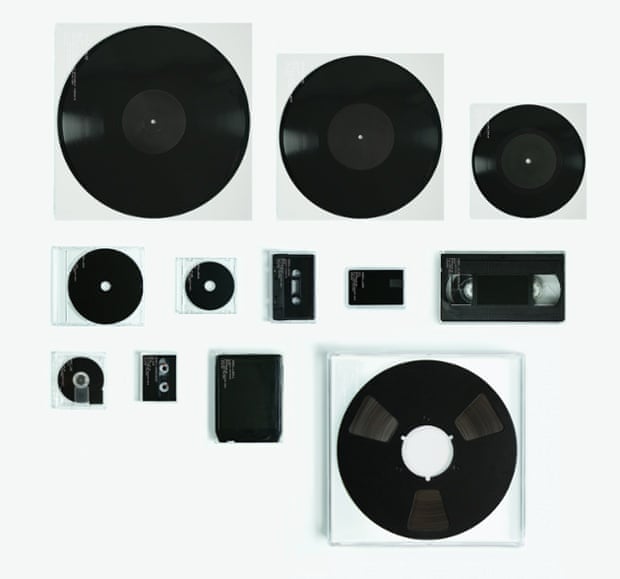For complitionists only
Posted: Fri May 29, 2015 4:05 am
Admiral of the antediluvian Jack White had his Russian doll-style novelty release of Lazaretto last year, marking a point where the vinyl revival verged on self-parody. Artist and music producer Trevor Jackson has gone one step – well, 12 steps – further with the release in February of FORMAT: each of the album’s dozen tracks will be issued on a niche or near-obsolete physical format.
It’s as much an art prank as a keenly timed marketing strategy, mainly because much of the hardware required to play these formats ended up in skips or museums years, if not decades, ago. Tracks will be released on vinyl (7in, 10in and 12in) as well as CD, mini-CD, cassette, USB, VHS, MiniDisc, DAT, 8-track and reel-to-reel, like a This Is Your Life montage sequence for recorded sound.
The formats are incredibly limited-edition – ranging from just 10 reel-to-reels to 500 12in singles. To crank up the art side, there is a tie-in exhibition at The Vinyl Factory in Soho, where dust will be blown off audio equipment last seen in a pre-internet, or even a pre-decimalisation, age.
Jackson has put a great deal of thought into mining the past. In grand terms, it’s a comment as much on the history of recorded sound as on the nostalgia that snakes around discussions of audio quality today.
“I want the people who purchase these items to feel special; they will be the only ones who possess these tracks in any form at that time,” said Jackson. “The fact [that], culturally, everything’s become so convenient and easily accessible while in the process totally disposable is an important subject I needed to address with this project.”
His point is that it’s very difficult to have an emotional connection with a stream or an MP3. Digital allows us to listen more broadly – tens of millions of songs instantly available – but something is being lost in terms of how listener attention and appreciation is apportioned. FORMAT wants to stand, even as a memento mori, of a way of listening that is, depending on your view, being sharply reconfigured or worryingly eroded.
He is not the first to release such a limited product. There are echoes of Jean-Michel Jarre’s 1983 album Music for Supermarkets, of which only one copy was made. More recently, Wu-Tang Clan manufactured a single copy of Once Upon a Time in Shaolin, which is to be toured around museums and art galleries.
There are also echoes, presumably unintentional, of Drop the Boy by Bros, which was released across so many formats in 1987 that the Gallup chart, forerunner to today’s Official Charts Company, capped the number of formats of a single release that were chart-eligible. Given its experimental nature, FORMAT will not be troubling the top 40, so there’s little to fear in terms of it being disqualified from the chart rundown on a Sunday evening.
Jackson is also far from the first person to release music on archaic formats in the modern age. Cheap Trick put out their album The Latest on 8-track in 2009; Suede included a cassette and a flexi-disc in the deluxe reissue of Dog Man Star last year; and Mogwai released the song Tracy as a wind-up metal music box in 2004. It is, however, the range of formats that gives Jackson the competitive edge, although the formats he chose to overlook speak volumes about their white-elephant status in the world of audio archaeology.
While DualDisc (CD on one side, DVD on the other), digital compact cassette and laserdisc are still too contemporary in feel for a retro revival, maybe there’s hope for the 10th anniversary reissue of FORMAT. Who knows, Jackson could release bonus tracks on Dictabelt, SoundScriber or Tefifon and sell them to octogenarians wistful for the formats that first knocked their world off its axis. Nostalgia should know no age.
